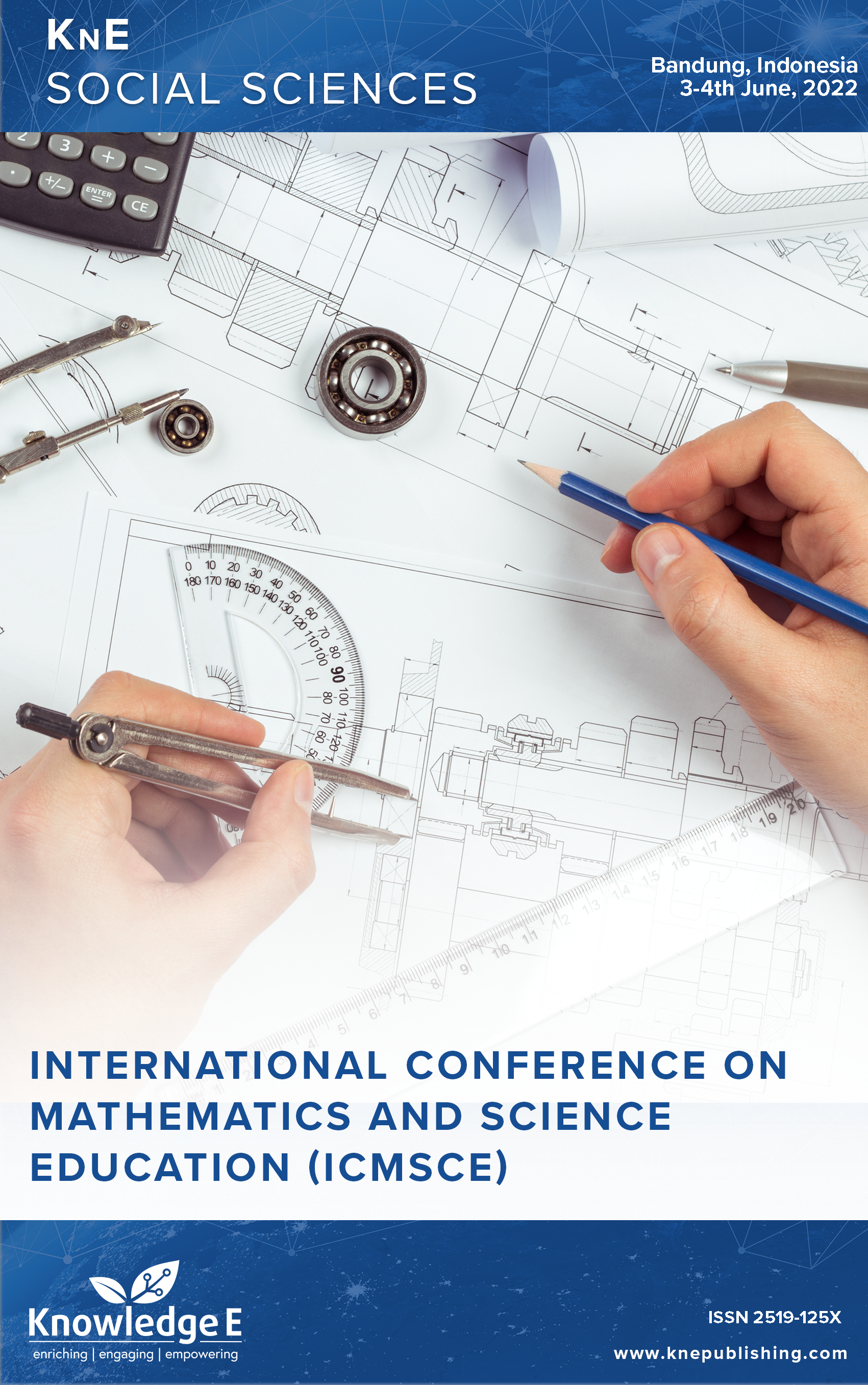Analysis of Student's Mathematical Representation Abilities on Plane Figures Subject in the New Normal Era
DOI:
https://doi.org/10.18502/kss.v9i13.15950Abstract
This study aims to analyze the mathematical representation ability of junior high school students on plane figures subject in the new normal era. To prevent the spread of Covid-19 in schools, learning was carried out alternately with 50% face-to-face learning and 50% independently at home. This research is a qualitative descriptive study. The subjects of this study were 20 students studying in seventh-grade students, in the second semester, at Dharmasraya West Sumatra for the academic year 2020/2021. The instruments used in this study were tests of students’ mathematical representation abilities and interviews. The indicators measured are visual representation, expression representation, and word representation. Based on the research conducted, it was found that the level of students’ mathematical representation ability was still low (52.65). In general, students still experience problems in using their mathematical representation skills; therefore, students must be able to hone their representation skills in visual, symbol, and verbal representations. Mastering mathematical representation skills can make it easier for students to solve mathematical problems, and there will be fewer conceptual errors. Moreover, it is necessary to conduct additional research to enhance students’ mathematical representation skills.
Keywords: mathematical representation abilities, new normal era, plane figures subject
References
Bagus C. Analisis kemampuan representasi matematis siswa dalam menyelesaikan soal lingkaran pada kelas vii-b mts assyafi’iyah gondang. Suska Journal of Mathematics Education. 2018;4(2):115. DOI: https://doi.org/10.24014/sjme.v4i2.5234
Pendidikan BS. “Standar isi kurikulum 2006.” In: Standart Isi untuk Satuan Dasar dan Menengah: Standart Kompetensi dan Kompetensi Dasar SMP/Mts (2006).
Runtukahu T, Kandou S. “Pembelajaran matematika dasar bagi anak berkesulitan belajar.,” Yogyakarta: Ar-ruzz media. p. 2014.
Walle J. “Sekolah dasar dan menengah matematika pengembangan pengajaran.,” Jakarta: Erlangga. p. 2008.
Siagian MD. “Kemampuan koneksi matematik dalam pembelajaran matematika.,” MES: Journal of Mathematics Education and Science2. vol. 2, no. 1, pp. 58–67, 2016.
Hendriana H, Rohaeti EE, Sumarmo U. “Hard skills dan soft skills matematik siswa.,” Bandung: Refika Aditama. vol. 7, p. 2017.
Gonzales P, Guzmán JC, Partelow L, et al. Highlights from the Trends in International Mathematics and Science Study (TIMSS), 2003. NCES 2005-005. US Department of Education; 2004. pp. 1–119. DOI: https://doi.org/10.1037/e672832007-002
Gonzales P, Williams T. Mathematics and science achievement of u.s. fourth-and eighth-grade students in an international context. Science. 2009;(September):112.
Mullis IVS, Martin MO, Arora A. TIMSS 2011 international results in mathematics., 2011.
Mullis IV, Martin MO, Foy P, Hopper M. Timss 2015 international results in mathematics. TIMSS & PIRLS International Study Center; 2016. pp. 1–971. DOI: https://doi.org/10.1007/978-94-007-6165-0_515-2
Lee CY, Chen MJ. Effects of polya questioning instruction for geometry reasoning in junior high school. Eurasia J Math Sci Technol Educ. 2015;11(6):1547–61. DOI: https://doi.org/10.12973/eurasia.2015.1419a
Riza’i MM. “Kemampuan representasi matematis dan kemandirian belajar siswa dalam reciprocal teaching dengan resitasi dan self assesment,” (2018).
Dahlan JA, Juandi D. “Analisis representasi matematik siswa sekolah dasar dalam penyelesaian masalah matematika kontekstual.” Jurnal Pengajaran Matematika dan Ilmu Pengetahuan Alam. 2011;16(1):128. https://doi.org/10.18269/jpmipa.v16i1.273 DOI: https://doi.org/10.18269/jpmipa.v16i1.273

